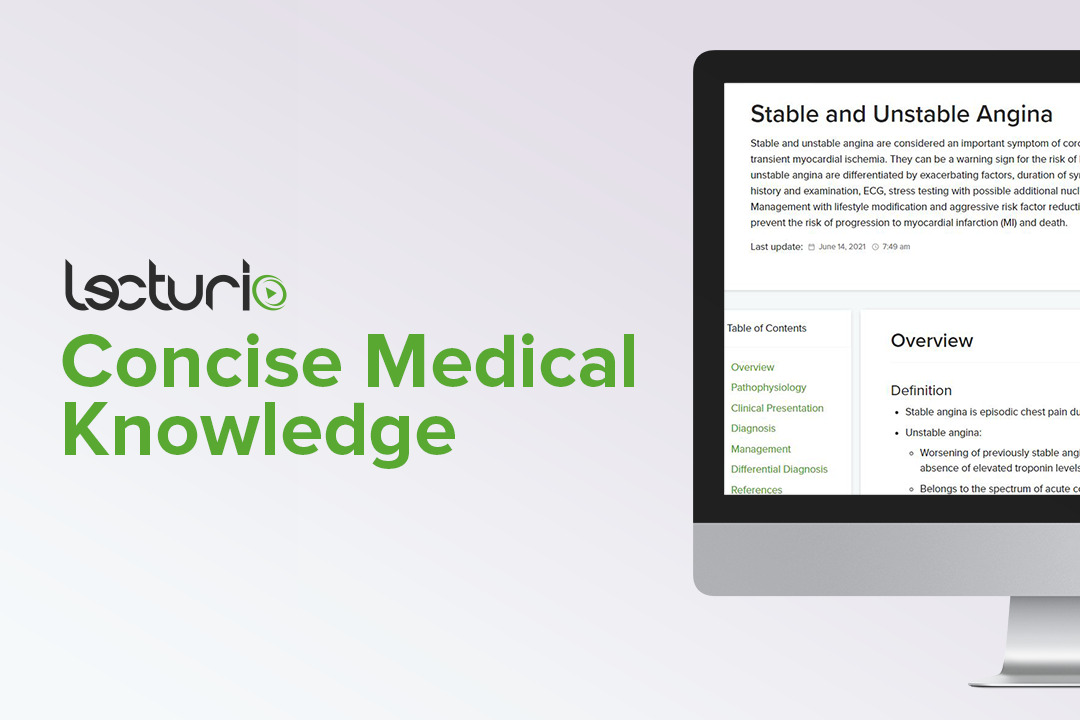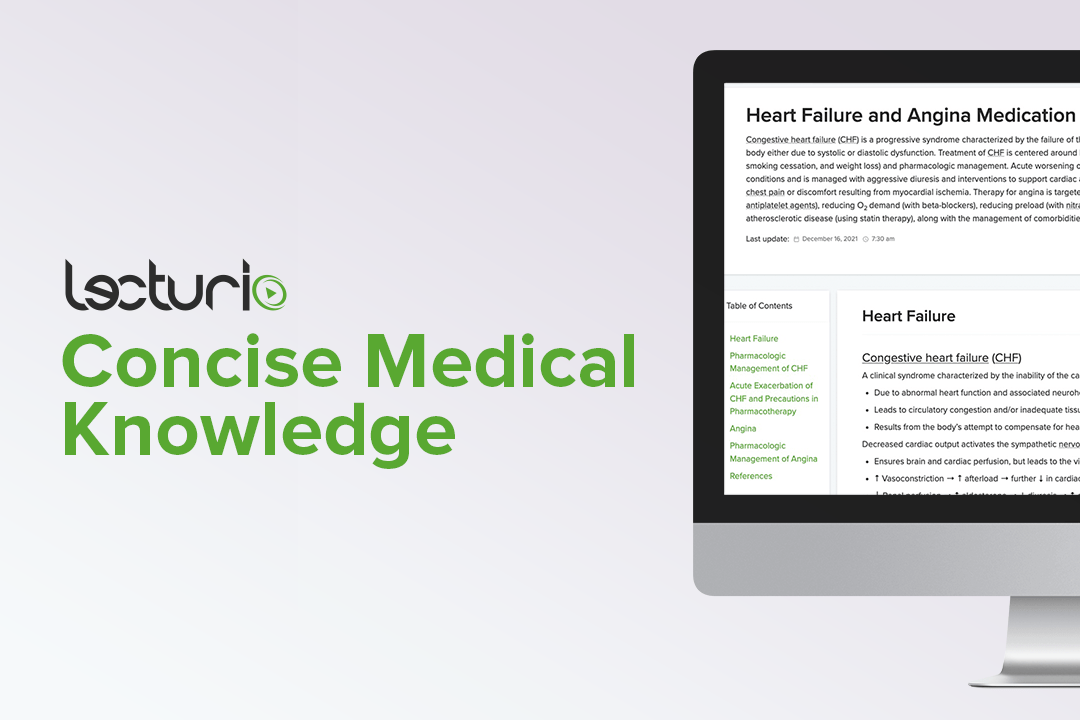Playlist
Show Playlist
Hide Playlist
Introduction – Heart Failure and Angina Management
-
Slides HeartFailureAndAngina CardiovascularPharma.pdf
-
Download Lecture Overview
00:01 Welcome to pharmacology by Lecturio. I'm Dr. Pravin J.Shukle and we are going to be talking about heart failure management and angina management. Let's take a look at this diagram. Angina literally means pain in the chest. Typical symptoms of angina are caused by narrowing of blood vessels. Be very aware that angina doesn't necessarily mean that the blood vessel is completely blocked off. It just means that the blood flow is restricted through a process of atherosclerosis. Heart failure is when the heart is not pumping enough blood to do its job. You can have diastolic dysfunction, typically associated with heart failure with preserved ejection fraction, and systolic dysfunction, typically associated with heart failure with reduced ejection fraction Systolic dysfunction occurs when the ventricles (either the left ventricle, right, or both) cannot contract forcefully enough. 00:56 This leads to a reduced ventricular ejection fraction. Diastolic dysfunction occurs when the ventricles cannot relax and fill with blood properly. In this case, the ejection fraction is typically preserved. 01:11 Angina specifically is a reduced blood flow because of narrowing of the blood vessels of the heart. We put these two diseases together because the treatment of both conditions often overlap. Let's start with drugs used in angina. Angina can be treated with vasodilators. These vasodilators can be nitrates or calcium channel blockers like verapamil. There are many types of nitric based treatments. There are the short acting nitrates and the long acting nitrates. 01:45 In terms of treating angina we do talk about vasodilator activity of calcium channel blockers. But there is another side to calcium channel blockers. They are also cardiac depressants. So they slow down the heart rate and reduce the oxygen demand that the heart is asking for. The other cardiac depressants are beta blockers. We have another drug that is used in angina as well. Ranolazine has antianginal effects without causing significant hemodynamic changes. 02:17 Its underlying action on the late phase of the inward sodium current is thought to improve the efficiency of oxygen usage by the myocardium. 02:26 So these are the drugs that are used in angina.
About the Lecture
The lecture Introduction – Heart Failure and Angina Management by Pravin Shukle, MD is from the course Cardiovascular Pharmacology.
Included Quiz Questions
What are the two major classes of medications used to manage angina pectoris?
- Vasodilators and cardiac depressants
- Vasodilators and cardiac stimulants
- Vasoconstrictors and cardiac depressants
- Vasoconstrictors and cardiac stimulants
- Inotropes and vasoconstrictors
Customer reviews
5,0 of 5 stars
| 5 Stars |
|
2 |
| 4 Stars |
|
0 |
| 3 Stars |
|
0 |
| 2 Stars |
|
0 |
| 1 Star |
|
0 |
Very helpful lectures in explaining and also giving a map flow at start about numerous HTN meds.
These lectures are great!! They explain everything clearly and concisely!!





